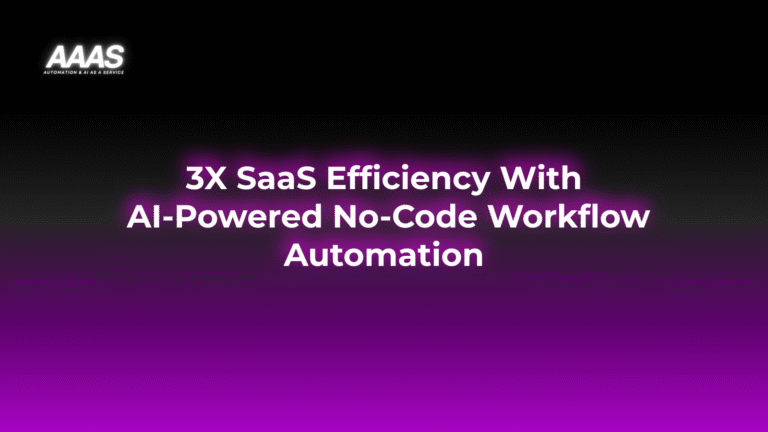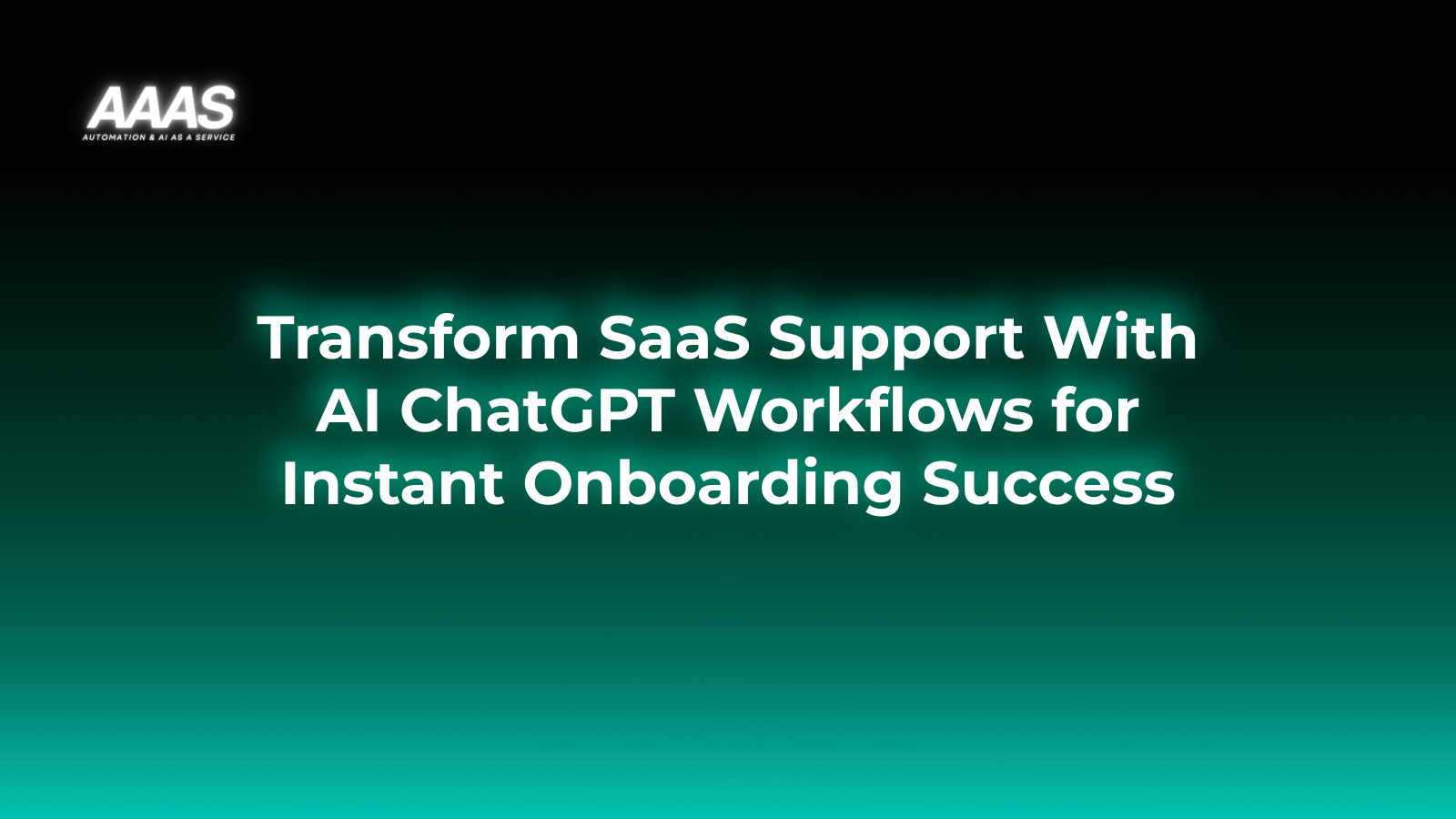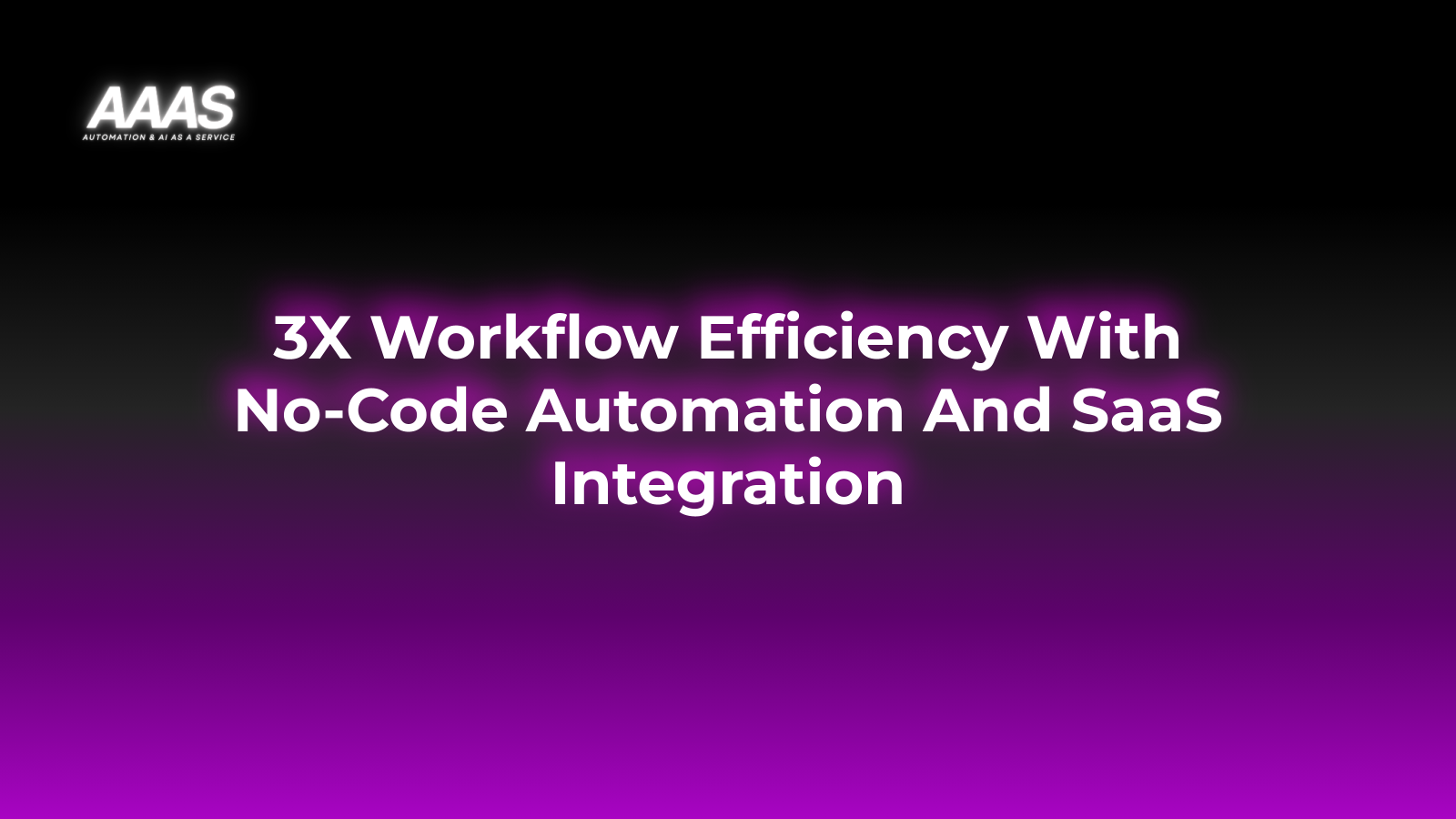Leveraging AI-Powered No-Code Workflow Automation in SaaS Platforms

The Market Problem
Modern SaaS platforms handle increasing business complexity, but often face bottlenecks due to:
- Manual, repetitive operations that slow productivity
- Cross-platform data silos impeding workflow integration
- High cost and resource demands for custom development
- Difficulties in scaling solutions without heavy IT involvement
- Slow time-to-market for new process automation
AI-Powered No-Code Workflow Automation: Solution & Benefits

AI-powered no-code platforms empower teams to automate cross-tool processes rapidly, without deep technical skills.
Major Benefits
- Efficiency: Instantly automate repetitive tasks and approvals
- Productivity: Free up employees for high-value work
- Cost Reduction: Reduce IT and staffing costs for workflow management
- Quick Deployment: Launch and iterate workflows in days, not months
- Scalability: Easily update or expand automations as your SaaS operations evolve
- Integration: Connect multiple SaaS apps (CRM, marketing, support, etc.) without coding
- Accuracy: Use AI-powered error checking and smart suggestions to prevent human mistakes
Real Use Cases in SaaS Platforms
- Customer Onboarding: Automate user sign-ups, document verification, and welcome emails across platforms
- Lead Routing: Use AI to score leads and assign them automatically to sales agents in CRM systems
- Invoice Processing: Scan, extract, and validate invoice data for accounting automation
- Support Ticket Triage: AI categorizes and routes support tickets to the right teams without manual intervention
- HR Operations: Auto-update employee records, schedule interviews, send offer letters, and trigger onboarding workflows
- SaaS Subscription Management: Automatically alert users for renewals or failed payments and update accounts
Notable Implementations
- Zapier’s AI Automation for automating 6+ million workflows daily
- Make.com’s AI builder for drag-and-drop complex workflows
- Pipefy’s AI Process Automation
Technical Details: How It Works
- User selects a workflow template or builds from scratch via UI
- Connects SaaS apps by authenticating APIs through secure OAuth tokens
- Uses drag-and-drop to define triggers, actions, conditions, and logic
- AI models suggest optimizations, map fields, and detect errors in logic
- Workflows are monitored with dashboards and logs for reliability
Key Components
- Visual Workflow Designer (No-Code UI)
- Pre-built SaaS Integrations (Slack, Salesforce, HubSpot, Asana, etc.)
- AI Features (NLP for data extraction, intent analysis, error detection)
- Secure API Connections
- Role-based Permissions and Audit Logs
Comparison With Alternatives
| Feature | AI No-Code Automation | Traditional Automation | Manual Processes |
|---|---|---|---|
| Implementation Speed | Hours/Days | Weeks/Months | Instant, but error-prone |
| Technical Skill Needed | None/Low | High (Dev/IT) | None |
| Scalability | High | Medium | Low |
| Cost | Low/Medium | High (Dev time) | High (Labor) |
| Flexibility | High | Medium/High | Low |
| AI Optimization | Built-in | Custom/None | None |
Popular Tools & Pricing Table
| Platform | AI Capability | Starting Price (Monthly) | Key SaaS Integrations |
|---|---|---|---|
| Zapier | AI-powered workflow generation | $19.99 | Gmail, Slack, Salesforce, HubSpot, Shopify |
| Make.com | AI scenario builder | $9 | Google Suite, Mailchimp, Trello, Notion |
| Pipefy | AI process automation | $24 | Zendesk, Jira, Quickbooks, Salesforce |
| Microsoft Power Automate | AI builder, RPA | $15 | Office 365, Dynamics 365, SharePoint |
| Workato | AI automation with ML | $599* | NetSuite, Marketo, SAP, Jira, Slack |
*Enterprise pricing; SMB or trial plans may vary.
ROI-Focused Practical Examples
Example 1: SaaS Customer Support Team
Manual ticket triage: 1,000 tickets/month x 2 min each = 33 hours/month
AI-powered automation: 90% auto-assigned, reducing manual handling to 3 hours/month.
Saves: 30 hours/month × $35 average hourly cost ≈ $1,050 saved/month
Example 2: Automated Invoice Processing
Processing Invoices manually: 400 invoices/month x 5 min = 33.3 hours
Automated extraction and validation: Only 5% need manual review (2 hours).
Saves: 31.3 hours/month × $40/hour ≈ $1,252 saved/month
Example 3: HR Onboarding Workflow
Onboarding 20 new hires: Reduced from 1 week of scattered manual tasks to 1 hour for review using automated document requests, background checks, and provisioning.
How to Set Up AI No-Code Workflow Automation
- Identify Target Processes: Focus on repetitive, rules-driven SaaS workflows
- Select an AI No-Code Platform: Match required integrations, pricing, and AI features
- Connect SaaS Apps: Authenticate and establish data flows
- Design the Workflow: Use visual builder, drag and drop triggers, actions, conditions
- Leverage AI Assistance: Review AI suggestions for field mapping, logic optimization, error prevention
- Test Thoroughly: Use sandbox and preview tools
- Monitor & Optimize: Review analytics, iterate as your processes evolve
Pros and Cons
Pros
- Rapid deployment and easy workflow modifications
- Enables non-technical business users
- Massive time and cost savings over hand-coded automations
- Scales to hundreds or thousands of tasks with consistent quality
- Smart AI features for error reduction and process optimization
Cons
- Less flexibility for highly custom, complex logic than pure code
- Subscription costs may add up for high usage
- Integration limited to supported SaaS apps/APIs
- AI suggestions can misinterpret intent for niche workflows
Expert Tips for Maximum Efficiency
- Start with core business processes that are repeatable and rules-based.
- Regularly audit automations for compliance, efficiency, and security.
- Empower “citizen developers” from business units with internal training.
- Leverage AI’s anomaly detection to spot and fix broken data flows early.
- Periodically review emerging integrations and AI capabilities from your platforms.
- Benchmark your ROI and reinvest savings into further automation.
FAQ
- Is no-code automation secure?
- Yes, leading platforms use secure OAuth, encrypted data transfers, and audit trails. Still, proper access control is essential.
- Can AI-powered automation replace developers?
- No, it typically augments developer capacity by handling routine workflows, freeing them for more complex work.
- How scalable are AI no-code automations?
- Most platforms support thousands of daily workflows across dozens of SaaS apps with minimal maintenance required.
- What SaaS apps can I connect?
- Most leading apps (Salesforce, Slack, Google Workspace, HubSpot, Jira, etc.) are supported. Check the integration directory of your chosen platform.
- How do I measure ROI?
- Track time saved, error reduction, and operational cost per automated process versus manual baseline.
References
- Gartner: Low-Code/No-Code Growth
- Zapier AI Automation Guide
- VentureBeat: How AI Low-Code/No-Code Tools Drive Productivity
- PwC: The Power of Automation
Last Updated
2025-10-23T09:00:28.785Z








